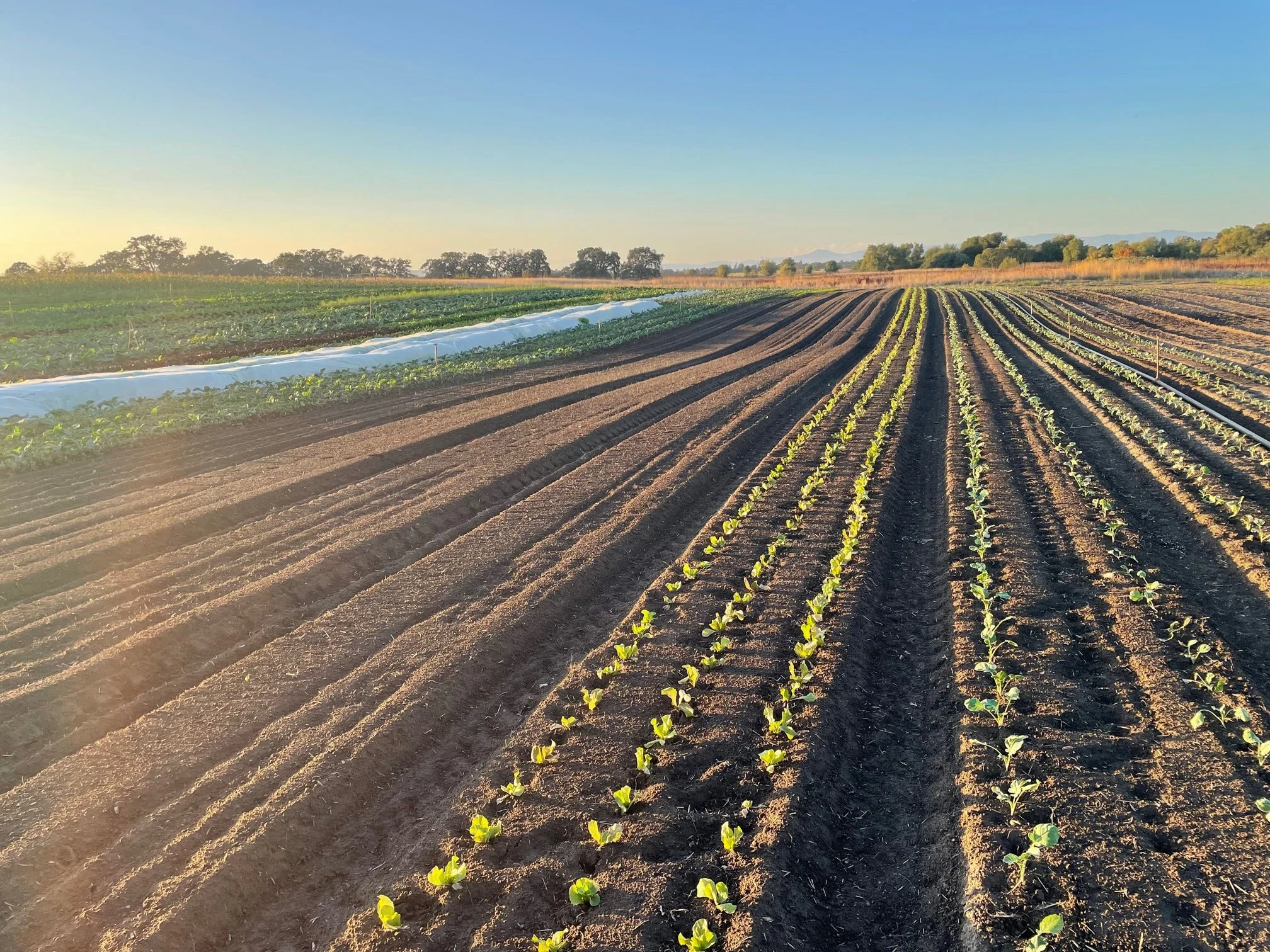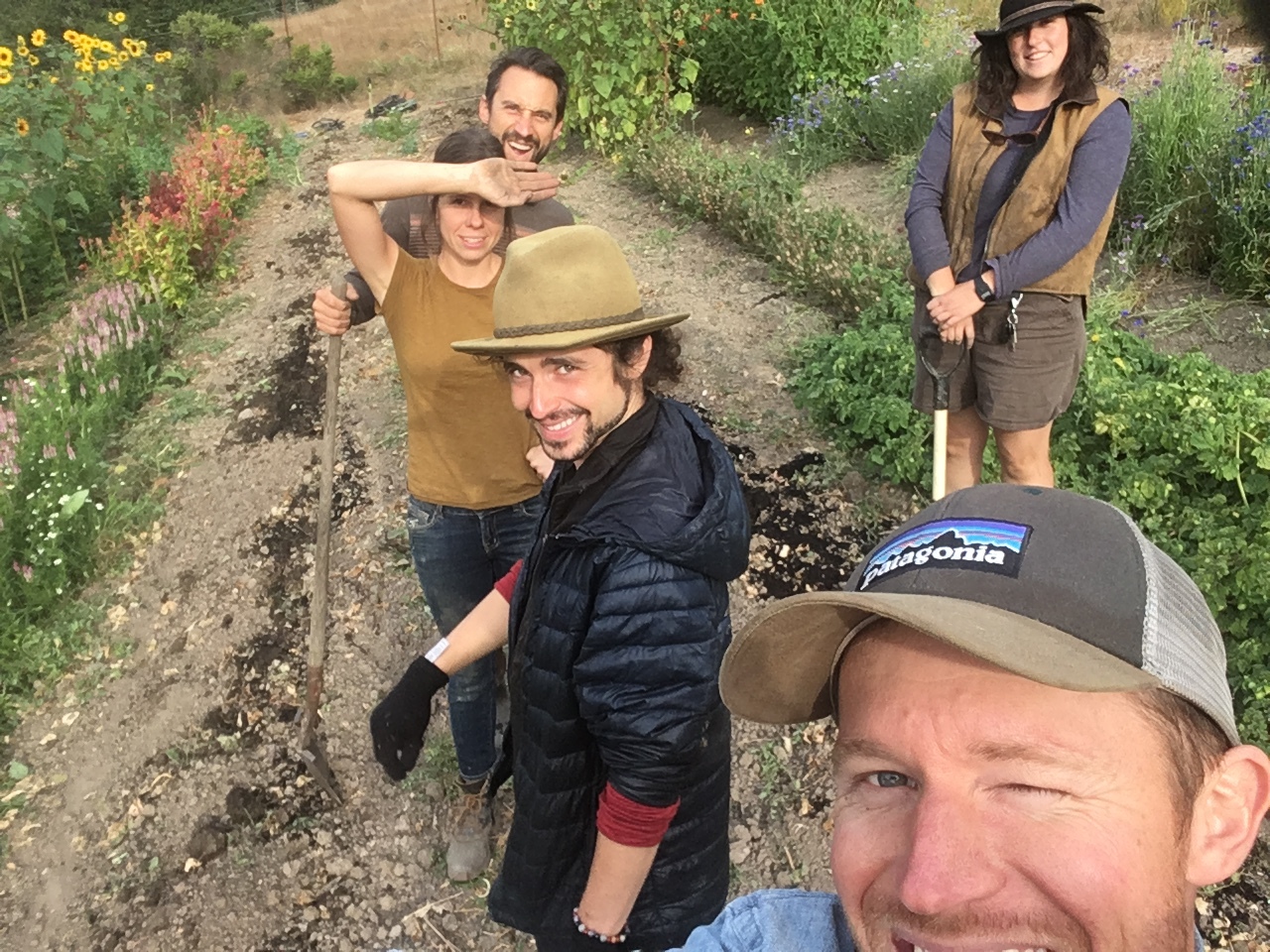This year, we planted two heirloom corn varieties for the CSA (as well as a small patch of the Tzutujil Maya Corn of Birth and Death brought here by CSA member Joshua Harris.)
Many of you met the Painted Mountain corn last year. This gorgeous variety was developed in Montana by Dave Christensen, a farmer who dedicated his life to breeding corn that could survive the the conditions and high altitudes there. He did this by gathering heirloom seeds from Northern Native Americans tribes and homesteaders, planting them together, letting them naturally cross pollinate, and carefully selecting for hardiness and nutrition. The result is Painted Mountain corn.
This year, our Painted Mountain corn didn't do very well. We think we either a) planted it a few weeks too late and it got the solar signal to tassel too early and/or b) in was affected negatively by the symphylans in our soil (little centipedes that eat roots hairs). As such, we will not distribute the Painted Mountain to members as flour in this year; instead we will save all of the precious kernels we get so that we can plant again next year (earlier and in a different spot!) and/or we are also considering switching to a variety that will do better in these soils, and then continue our community heirloom saving tradition. Sometimes the road to abundance is restraint.
Kayta in our first Floriani field in 2013
Our other corn variety, drying out there in the fields, is Floriani Red Flint. The Floriani did quite well this year (hurray for diversity!) and we will be harvesting it together on Wednesday. Floriani Red Flint is a Northern Italian heirloom, saved for generations for the exceptional polenta it makes. Kayta and I have grown it in Sonoma County for 6 seasons now and we can confirm... it makes amazing polenta, especially when you add a little Bramble Tail cream to it. We’ll dry the ears in our greenhouse after we harvest them, and then grind the kernels it into a coarse flour and distribute it to the CSA late into the season.
Flint corn kernels are hard as flint, hence the name. They have a dense outer shell protecting the nutritious germ within. This shell, combined with the low water content of the kernels, make flint corns resistant to freezing and excellent for storage. Flint corns were the staff of life for Native American cultures in harsh climates on both hemispheres.
Indeed, since domestication in Southern Mexico some 10,000 years ago, maize has been the staff of life for much of humanity as we know it, from the Mississipian and Mayan civilizations to the supermarket aisles of today: Corn is king.
And a king demands an Ode...
Take it away, Pablo...
* * * * *
Ode to Maize
by Pablo Neruda
America, from a grain
of maize you grew
to crown
with spacious lands
the ocean foam.
A grain of maize was your geography.
From the grain
a green lance rose,
was covered with gold,
to grace the heights
of Peru with its yellow tassels.
But, poet, let
history rest in its shroud;
praise with your lyre
the grain in its granaries:
sing to the simple maize in
the kitchen.
First, a fine beard
fluttered in the field
above the tender teeth
of the young ear.
Then the husks parted
and fruitfulness burst its veils
of pale papyrus
that grains of laughter
might fall upon the earth.
To the stone,
in your journey,
you returned.
Not to the terrible stone,
the bloody
triangle of Mexican death,
but to the grinding stone
sacred
stone of your kitchens.
There, milk and matter,
strength-giving, nutritious
cornmeal pulp,
you were worked and patted
by the wondrous hands
of women.
Wherever you fall, maize,
whether into the
splendid pot of porridge, or among
country beans, you light up
the meal and lend it
your virginal flavor.
Oh, to bite into
the steaming ear beside the sea
of distant song and deepest waltz.
To boil you
as your aroma
spreads through
blue sierras.
But is there
no end
to your treasure?
In chalky, barren lands
bordered
by the sea, along
the rocky Chilean coast,
at times
only your radiance
reaches the empty
table of the miner.
Your light, your cornmeal,
your hope
pervades America’s solitudes,
and to hunger
your lances
are enemy legions.
Within your husks,
like gentle kernels,
our sober provincial
children’s hearts were
nurtured,
until life began
to shuck us from the ear.
* * * * *
See you in the corn fields,
David & Kayta





